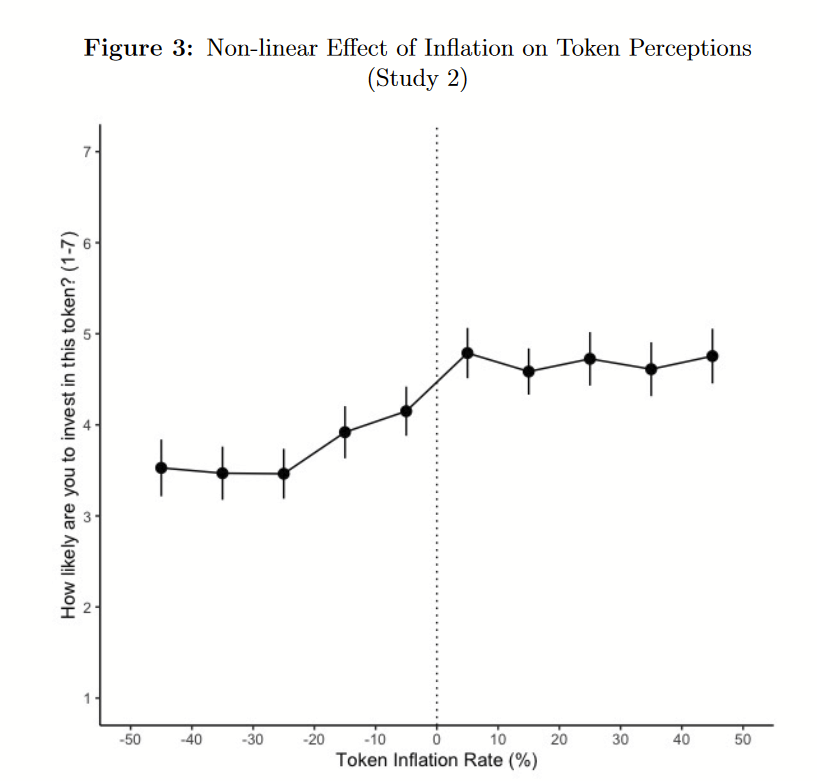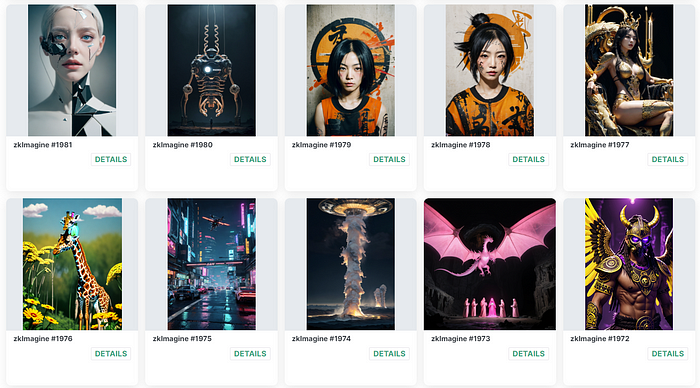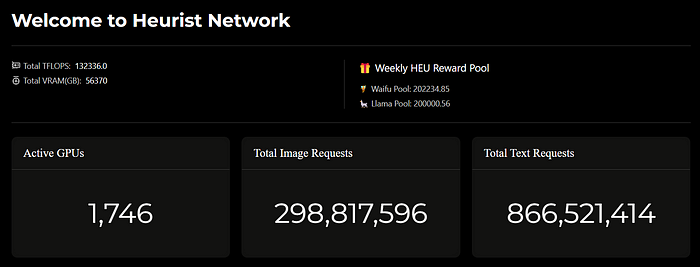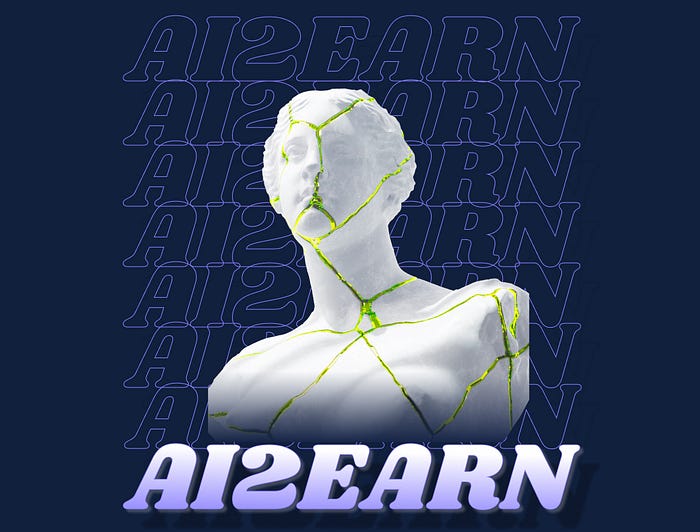Over the years, I’ve been able to interview some of my favorite developers ever including a few I never though would be possible, but it isn’t often I get to talk to one of the few people responsible for what is likely my favorite game of all time. That’s where Christopher Ortiz AKA kiririn51 of Sukeban Games comes into the picture. We’ve covered their titles on TouchArcade for years because at one point VA-11 Hall-A was even supposed to come to iPad (and I asked about that later in this interview). With Sukeban Games’ newest project, .45 PARABELLUM BLOODHOUND, officially announced, I had a chance to have a long chat with Christopher Ortiz about the game, fan reactions, VA-11 Hall-A, inspirations, Suda51, The Silver Case, and also coffee of course.
TouchArcade (TA): Tell us a little bit about yourself and what you do at Sukeban Games.
Christopher Ortiz (CO): I’m Chris, I’m a game creator and I do way too much in this company. I like to hang out with friends and eat delicious food when I’m not locked in.
TA: I last spoke to you in 2019 around the time VA-11 Hall-A hit PS4 and Switch following its prior release on PS Vita and its debut on PC. Even back then, as a fan of the game, it was wild seeing so much merchandise and promotion in Japan. You recently visited Japan for Bitsummit. How has it been for you visiting Japan and seeing the reception to VA-11 Hall-A and now your new project, .45 PARABELLUM BLOODHOUND?
CO: Japan is like my home away from home even if its government doesn’t like it, so that’s a homecoming for me. Very emotionally charged. I also haven’t been at a game event as an exhibitor since Tokyo Game Show 2017; that was 7 years ago. That’s 7 years of roaming game events and being like “I want that” “I want some of this energy”. Now I feel like a pro-wrestler that’s coming out of retirement to a brand new world and industry; I’m lost, confused, not knowing if I still have it… but I was worried about nothing. People didn’t forget about us and still support the studio no matter what, so I’m never taking shit for granted, or letting these memories slip away. This will be my fuel to move forward.

TA: I consider VA-11 Hall-A one of my favorite games of all time, and I replay it each holiday season. When you worked on it many years ago, did you ever expect to see it grow this big and even get multiple figures with a new one coming for Jill soon?
CO: I didn’t expect the game to sell more than 10-15k copies, but we definitely knew we had something special brewing, or else we wouldn’t have pushed through with it. It’s just that the scale of said success was a little overwhelming and I think we’re still recovering from some of its unexpected side-effects.
TA: VA-11 Hall-A is now playable on PC, Switch, PS Vita, PS4, PS5 (through back compatibility). Whatever happened to that iPad version that was announced years ago? Are ports like that up to Ysbryd or do you also have some involvement? I’d love to see it hit Xbox as well if that’s possible.
CO: I actually playtested a build for iPad but it didn’t go anywhere for whatever reason. Maybe I failed to respond to an email. You’d have to ask the publisher.

TA: Many years ago, Sukeban Games were just Kiririn51 (yourself) and IronincLark (Fer). How has the team changed since then?
CO: We’re currently six people. Some have come and go, but overall we want to keep a small and tight operation.
TA: Leading into this question -> How has it been working with MerengeDoll?
CO: Merenge’s a trooper. She has this supernatural ability to pull ideas directly out of my brain and give them visual shape, so it’s always been a pleasure to work with her. It sucks that some of the projects she was working on as main artist got canned for reasons beyond our power, but it is what it is. The day will come when people will get to see Merenge’s true power. There’s still a lot of Merengedoll in 45pb so that’s cool as hell.

TA: Can you talk about how it was working with Garoad on the music on VA-11 Hall-A? Just like the game, the soundtrack is one of my favorites ever.
CO: Michael and I always had similar music tastes and influences, so the process was very free-form. He’d make a track, and I’d love the shit out. Repeat the process until the soundtrack is ready to go. Sometimes I would send him a song I liked as a reference, sometimes he’d create a completely original song that would inspire images in the game, then the images would inspire more music. This synergy gave the game a firm identity that stands the test of time in my opinion.
TA: I didn’t realize it until recently, but VA-11 Hall-A kind of became one of those indie games that had a very vocal fanbase and got a good amount of merch that keeps selling out. I think the vinyl box sets are also on multiple pressings now and that SLUT shirt keeps selling out. A good friend of mine recently bought it as well. How much input do you have in the merchandise? Is there anything you want to see made that hasn’t happened yet?
CO: I don’t have much input on merch creation. I mostly give the thumbs up or down once a whole chain of people already made the hard choices beforehand. Would like to be a little more involved for 45pb now that I know what I’m dealing with.
TA: I still have a few more questions before getting to your new game. Let’s go back to 2019 for a second. Playism’s JP release of VA-11 Hall-A included a fantastic art book cover. I really wish I could get that piece of art signed by you and framed. Can you talk about the inspiration for it and how you pay homage to your favorites like that in your work?
CO: Back when I drew that cover I was going through really tough times; even though I hadn’t fully realized yet. We were very focused on surviving the collapse of our country and many other things.
During this time, at our old office, we’d listen to a lot of Gustavo Cerati; his album Bocanada to be more precise and its tunes managed to keep us going in the face of uncertainty. So when I was asked to draw a new piece for the artbook I couldn’t help but pay homage to it. I admit now that it’s a little too overt and I would do it differently now, but I’m still proud of it. In fact, I’ve been reconsidering my approach to inspirations a lot in the past few years, and this will be obvious once people play 45pb.

TA: You and Fer have spoken a lot about VA-11 Hall-A over the years, but I cannot pass up a chance to talk about how amazingly written and designed the characters are. Looking back at the work you put into it, did you expect certain characters to become as popular as they did?
CO: I expected Stella to be the most popular one since her gifs would often go viral before release, but you can never predict this sort of thing. And it’s like I said before; I sort of knew certain things were gonna be a hit, I’m just unable to properly articulate why I thought that way or why it worked, and at this point I rather not know. The moment a hunch becomes a science the magic disappears. Formulas are terrible in this line of work. You gotta let things flow; Let them become their own beautiful thing.
TA: I’ve joked with friends about how N1RV Ann-A is my “Silksong”, but I have no problem waiting as long as it takes. I still enjoy revisiting VA-11 Hall-A often. Do you go back and try out whatever you had done for N1RV Ann-A or VA-11 Hall-A while working on unrelated projects?
CO: I like jotting down lore and characterization stuff for a rainy day. I love to draw Sam, I love coming up with new designs, characters; playing around with the general looks of the game, ideas for shots during cinematics; one liners, environments, atmosphere. I even like to imagine “what if this didn’t have to be a bartending game?” and other extreme musings, but that’s about the extent of the mindspace I dedicate to it currently.
Once we’re done with 45pb Nirvana’s development will pick up dramatically, though that really depends on if the spark is still there by then. So far it has no signs of extinguishing.

TA: As a huge Suda fan myself, I’m curious what you thought of No More Heroes 3 and Travis Strikes Again? As much as I love No More Heroes 3 (more than 11 playthroughs), I think Travis Strikes Again might just be Suda’s most “Suda” game yet.
CO: I REALLY like No More Heroes 3’s combat, but I wasn’t a fan of its writing. Maybe it was COVID, and game development is really tough; especially with the hardcore deadlines they had. But in general I think it wanted to be one thing at the start and then had to become another in order to be shipped. It’s a shame, and it is what it is. I just hope they only make new original games from now on and forget about sequels and reboots. Re-releases are OK; especially of the lost media kind, like Frog Minutes or the 25th Ward back in the day.
As for Travis Strikes Again, I agree it’s the best of the newer games. Feels like reading someone’s diary sometimes and that’s the kinda art I enjoy. I guess I didn’t see much of that in 3 outside of continuing some plot threads from TSA.
TA: What are your thoughts on Grasshopper Manufacture under Netease and the remasters announced? Suda even mentioned today that he’d love to bring Flower Sun and Rain to Steam.
CO: Netease is a big corporation so my hope would be that Grasshopper gets all the money and time they need to cook.

TA: VA-11 Hall-A’s journey from PC to PS Vita was quite something, and it involved many parties across regions. I remember buying the Japanese release just for the box art with no English included for publisher reasons. When it came to Switch and PS4, I think you wanted the JP release to have English so anyone could import it. How has it been for you now in Argentina trying to get your own game’s merchandise and merchandise in general? It is a pain over here with delays and extra import fees.
CO: I simply don’t import anything these days. I don’t wanna bother with Argentinian customs. Protectionist policies are stupid. Sure, make all electronics more expensive to import so the local market has a chance to compete, but there’s no Argentinian PlayStation to compete with, is there? There’s no Argentinian Steam, and so on. Only idiots come up with this sorta policy. Brazil does the same shit as well. Would be cool if they stopped.
TA: You’ve worked in PC-98 and PSX aesthetics a few times. When .45 PARABELLUM BLOODHOUND was announced, I was floored by how it looked like the perfect game I’d want from you. The reception has been largely positive, but I can’t imagine what you and the team went through leading into its reveal with N1RV Ann-A and such. Can you talk about how the last few months have been for yourself?
CO: We’ve been locked in and doing our thing. No crunch, all fun. We party, we feast, we travel. We touch that proverbial grass. Lots of insecurities and self-doubt for sure. We even tried to downplay things and manage expectations before the reveal, bracing ourselves for possible apathy from the crowd because it’s not Nirvana. But when it came to actually putting in the work there was no hesitation. I’m happy the announcement worked out, but now we gotta buckle up and finish the story.

TA: .45 PARABELLUM BLOODHOUND has been revealed, people can wishlist it on Steam, and I immediately thought of Vagrant Story x Sukeban Games’ Vibe when I saw the trailer. How has it been interacting with fans discussing it online and offline?
CO: It’s been incredibly fun, even though there’s so many comparisons with old games. Not that I mind but there’s been some ridiculous comments out there that boggle the mind.
One thing that surprised me was the amount of fanart right after the reveal. That shit was great. A fan even brought us a drawing that we proudly displayed on our table at Bitsummit for everybody to see.
TA: Probably too soon but when can I buy the key art as a poster and get it signed?
CO: Maybe on release.

TA: What were your main inspirations for .45 PARABELLUM BLOODHOUND from a visual and gameplay perspective?
CO: When coming up with the actual gameplay for 45PB there was a unique concern. People know Sukeban as a Visual Novel/ADV developer because of Va11halla, and I wanted a sort of bridge between that audience and something more action-focused. I saw Parasite Eve’s battle system, but instead of saying “I want more of that” I thought “This is a good solution to my predicament” thanks to the hybrid of real time and turn-based gameplay. And that’s pretty much the way we work. Rather than wanting to imitate something, or wanting more of it, I look to games of the past in order to solve modern problems. We don’t need to reinvent the wheel every time.
For the visuals, I remember roaming the streets of Milan in 2019. I was ultra depressed, and didn’t actually have a country to live in at the time so I was also in a state of limbo. The mix of modern structures and old buildings, then juxtaposed to all the neon lights and LED screens along the river had my imagination running wild. For me that was the genesis for the game’s look.
This marriage between the old, the new and the decadent. The cherry on top was when I moved to Buenos Aires and found a similar atmosphere, except it included that South American roughness and texture that’s absent in Cyberpunk worlds (which tend to be mostly inspired by east asian aesthetics), so I decided to lean on that to create something unique.

TA: Tell us a little bit about the team working on it including the composer, and how long it has been in the works.
CO: We’re two people working on it day-to-day (me and the programmer), plus Merenge helping with additional character and production design. The composer this time around is Juneji, who has been doing a LOT of work with us over the years. We have this massive stash of incredible music that he’s made, but it remains unfortunately private due to circumstances with failed projects. Same with Merenge’s art.
There’s been some hella demoralizing moments since it’s hard to work on things for so long, pouring your soul into them only to see them crumble in front of you, but we’ve remained a tight group over the years and one of my goals is that the world can finally witness their talents on a large stage. I owe them that much. We also added an old friend in a producer/babysitting role and it’s helped us to not neglect important non-game stuff.
As for how long it’s been in development: Technically since 2019 but the current iteration is roughly 2 years old. Before that it was all experiments until we arrived at the right “moment to moment” gameplay.
TA: .45 PARABELLUM BLOODHOUND had a teaser, gameplay, and now has a steam page. Are there any plans to offer a demo on PC in any of Valve’s demo fests on Steam in the near future?
CO: It’d be a pain in the ass to maintain a demo for this particular game so we rather keep those for offline events. Never say never though.
TA: A lot of my friends who love VA-11 Hall-A are excited for .45 PARABELLUM BLOODHOUND. Will it be accessible for everyone or is it too soon to say how the difficulty will be handled?
CO: It’s too soon to explain, but as I’ve mentioned before, the battle system itself is meant to be a bridge between vibes-based players and action-oriented players. Not that I’m trying to satisfy both, but rather ease one type of player into a new system.

TA: What is your favorite aspect of .45 PARABELLUM BLOODHOUND right now?
CO: As a game? definitely the atmosphere and the script. I sometimes play it for leisure on my Steam Deck while tryna sleep and wonder “Damn, what’s gonna happen next?” only to be like “you wrote this shit! you know where it goes!”. Also the combat is fun as hell once it opens up after the first chapter. Chaining skills and upping the tempo of combat after pulling off sick tricks makes for addictive gameplay. This will make sense later unless we fumble it.

TA: Can you give us an interesting development / design anecdote for .45 PARABELLUM BLOODHOUND and VA-11 Hall-A?
CO: So I mentioned the influences of cities like Milan and Buenos Aires in the creation 45PB’s world, but one thing that people might have noticed by looking at very early screenshots was that it used to feature some locales reminiscent of Hong Kong. I actually scrapped a lot, if not all of it, in favor of the “South American Cyberpunk” I’m aiming for after a conversation I had with a friend from China.
I was consulting with him about getting the fonts and the text of the billboards just right so it felt authentic, but then my mind broke and I began asking to myself “Why go through all this effort trying to be authentic when I can just leverage my own culture?” and it’s a sort of mantra I’ve been following ever since. I find terms like “cultural appropriation” silly, but the word “appropriation” by itself is something I’ve been contending with a lot. “Is it my place to tell this type of story?” “Is it okay if these characters speak this or that way?” and so on. Not that it limits my creativity or that I’m afraid of hurting sensibilities; I frankly don’t give a shit. I just think that more original works can be born if we leverage what makes us unique instead of trying to make more of what we like. It’s all about balance.

TA: Since the announcement, you’ve no doubt had folks asking for a console version when we don’t even have a release year for .45 PARABELLUM BLOODHOUND, but I wanted to know if there was any thought into working with a publisher or will this be self-published?
CO: We want to self-publish on PC and let other companies handle consoles. We’re in the process of finding the right partner for this.
TA: What were the inspirations behind Reila Mikazuchi’s design and character?
CO: I don’t know if I’ll get in trouble for this but I admire actor and singer Meiko Kaji a lot.
I love her movies, you name them: Prisoner Scorpion, Stray Cat Rock, Lady Snowblood, Jeans Blues. Something in her look is so captivating and I wanted my own Meiko Kaji for 45PB. I needed a character design that can say a lot with just the eyes. Someone who can project that inner pain and tragedy effortlessly, so using Meiko Kaji as a point of reference was a must.
As for the writing, every time I come up with characters they’re always a composite of several people I know and myself. So as to not ruin your impressions of her, I shall keep these inspirations a secret.

TA: How many iterations did you go through for her final design which rules by the way?
CO: I always had in mind the main look of long, black hair and pale skin. Plus the third eye. The thing that took me the most work was coming up with the outfit. She was wearing a suit at first actually! Then I wanted her to have a jacket, but finding the right type of jacket was a challenge. I gave her a biker jacket but it looked weird and I had to experiment a lot until I stumbled upon the current design. Merenge helped me with some accessories, such as the shoes, gloves and the logo on the back of the jacket.

TA: VA-11 Hall-A saw VA-11 Hall-A Kids and Sapphic Pussy Rhapsody released following the game. Ahead of .45 PARABELLUM BLOODHOUND, should we expect any smaller projects like that?
CO: Never say never but our plan with this game is to release it, let it be and move on to something new. No DLC or anything like that. Ports to future platforms are always on the table but that’s the extent of it.
If A24 or someone else wants to make a movie about it I’ll listen.
TA: What does a day in your life look like right now?
CO: Right now I’m a little f***ed up. I’m usually a good boy who works from 9am, takes a little lunch break then locks in again until 4 or 5pm, but sleep escapes me lately so I’m just trying to contend with that in whatever way I can. The key is to not stress over not having much sleep. As long as shit gets done it’s all good. When I’m not working I try to catch a movie at one of the many small cinemas in my neck of the woods, or go outside and take a walk and buy books I’ll take forever to read.
Buenos Aires has this magic that inspires me to go outside and have low key adventures. Can’t get too crazy because this is still latin america and we don’t f*** around, but I love it here and being surrounded by so much culture, great food, and a crazy clubbing scene keeps me sane. Especially when there’s friends around. I owe them a lot for my mental health even if I’m a huge recluse sometimes. I’m the type to uninstall messaging apps for a minute when I really need to be alone.

TA: What have you been playing lately that you’ve enjoyed a lot?
CO: There’s so many video games. This year I really loved Children of the Sun and Arctic Eggs. Late last year I was really into The Citadel, Lethal Company and RoboCop: Rogue City. I’m now in the process of going through The Evil Within, which feels like a lost Grasshopper game sometimes. There’s the Elden Ring expansion, and I also recently replayed Kane and Lynch 2 with a friend and had a blast as always. That game is so f***ed up in the right ways. We need more grit like that.
TA: What do you think of the current state of indie games?
CO: Every time I go to a game event I’m always madly inspired by all the unique games I see at the indie spaces and that energy is partly what kept me going despite all our production hiccups. That sense of community. That we all have this burning desire to create for the sake of creation. That shit is great. I f***ing love indie games and I think they’re better now more than ever.
BUT… I worry that we are trying to lean too much on familiar concepts and inspirations.
Games like Arctic Eggs do it right in that it’s trying to look like an old PSX game, but there were no PSX games like Arctic Eggs. Then there’s games that feel so blatant in their desire to be like one of the classics that I’m like “weren’t we supposed to be the creative ones?” not to mention the over reliance on “Roguelike” mechanics and such. But it’s not all bad. There’s some really cool shit all the time; especially on places like itch.io. It’s just that humans in general can be creatively bankrupt regardless of production scale. There’s triple A slop, there’s indie slop. There’s no escaping the slop. Being indie doesn’t make you inherently more creative and that’s okay. There’s always room for growth as long as we’re cognizant about our shortcomings.

TA: Are you looking forward to playing any specific game this year?
CO: I’m really looking forward to Slitterhead.
Dunno if they’ll be out this year but there’s also Sonokuni, Elation For The Wonder Box 6000, Studio System: Guardian Angel, Eating Nature (from the Arctic Eggs dev)… There’s a lot I’m excited about. My Twitter feed is an endless stream of cool indie games I doubt will ever see the light of day but the attempt is appreciated nonetheless.
TA: Obviously scheduling and such, but if we managed doing this interview on a call, I’d have taken this chance to nerd out about The Silver Case with you. I’m glad I listened to my friend and powered through it because that typewriter sound was too much for me. I adore The Silver Case and I know you love it as well. What elements from it inspired you the most and what’s your favorite track from the soundtrack?
CO: The Silver Case has always been one of those games that felt like a white whale to me. It was so utterly inaccessible that my mind pretty much created its own Silver Case by trying to fill the gaps. I used to browse this creepy Suda51 fansite way back in the day and I was always searching for every bit of info on this inscrutable-ass game, so when it actually released in a language I can understand I was afraid I wasn’t gonna like it but I think it was much more than I could ever have imagined. In that sense, the way Silver Case inspires me is tightly related to this need to fill gaps. The space between the real Silver Case and what I was imagining it to be is where a lot of the ideas for the presentation in games like Va11halla or The Radio Wave Bureau were born.
I can’t choose a single favorite song if I’m being honest. The whole soundtrack has such a vibe. Could be the Sayaka Baian theme that plays in Kamuidrome, but tomorrow it could be the opening theme, then the next day another one.

TA: Did you end up trying it out on console or just playing it on PC?
CO: I bought and played the game on every platform.
TA: The Silver Case’s original box art and aesthetic is probably the only thing I love as much as that in VA-11 Hall-A. What elements from its visual style had you curious back then?
CO: Definitely the stoic look of every character. Takashi Miyamoto is my goat along with Yoshitoshi Abe. For Va11halla I had to be very expressive with the characters because that’s what the story commanded, but ever since I was a kid I always had an affinity towards designs that say a lot with minimal facial expressions. Two of my favorite films are Patlabor 2 and Ghost in the Shell, and Serial Experiments Lain is also one of my favorites, so you can probably tell where I’m coming from with this.
I was also so transfixed by the UI. I could go on and on about this subject, but I’ll always lament that The Silver Case didn’t create a movement after its release. Visual Novels could look so much better if we had 1% the imagination of that original Grasshopper team. I’m not sure, but I think the look was done by Akihiko Ishizaka who would go on to work on Killer7 and Danganronpa. I wish he was still working with GhM. Or maybe he still does and I’m talking out of my ass.

TA: I think you’ve met Suda more than once now. How has that been for you and has he played VA-11 Hall-A? I know Travis Strikes Again has a VA-11 Hall-A tshirt that is the objectively best and only one everyone should use.
CO: I’ve met the guy twice and I’ll always lament not knowing enough japanese to just talk and talk all day with him. We share a lot of common interests, though the generational gap can be felt when he starts yapping about Japanese media from the 70s. I do know he played my game but I’ve no clue if he actually enjoyed it. Will have to ask if I ever see him again.
TA: Are you still up for this if the opportunity arises?
CO: There’s a story behind this that I’ll have to sit on for a while longer.
TA: My current game of the year for 2024 is Like a Dragon: Infinite Wealth. I know you loved Yakuza: Like a Dragon, but did you end up trying Infinite Wealth/8 or Gaiden last year?
CO: I love Like a Dragon so much but I didn’t play Gaiden, and Infinite Wealth seemed like too much of a commitment when I played at launch. The game was throwing mechanic after mechanic at me in a way that made me feel overwhelmed. Like there was too much game ahead of me, so I put it off for the time being. Maybe once I’m in the mood again I’ll give it a honest shot.

TA: VA-11 Hall-A has always been perfect to play on a portable. I loved it on Switch and recently found a mod that adds full controller support to the PC version. I’ve been revisiting it on Steam Deck. Have you had a chance to try it on Steam Deck yet?
CO: I did and saw it sort of works but not quite. I wish I could go back and tweak it but it’s not technically feasible. The Game Maker version we used doesn’t even work properly on modern Windows and it’s the reason we haven’t been able to do any sort of fix or update to it. Aside from simply not having the time to deal with all that mess we made (at a technical level).
TA: Honestly I still have a lot more I want to discuss with you, but I think I should save that for part 2 or a future interview. Let me end this with one final question. How do you like your coffee? Go into as much detail as you can. If not coffee, talk about your favorite beverage.
CO: I like my coffee black like a moonless night. Even better if it’s accompanied by cheesecake on a beautiful afternoon.
TA: Probably not smart, but it is nearly 2 AM and sending these questions over made me want to replay The Silver Case. Next time we talk, let’s do a dedicated discussion on The Silver Case.
CO: Absolutely!

I’d like to thank Christopher Ortiz for their time and help with this interview over the last few weeks.
You can keep up with all our interviews here including our recent ones with FuturLab here, Shuhei Matsumoto from Capcom about Marvel Vs Capcom here, Santa Ragione here, Peter ‘Durante’ Thoman about PH3 and Falcom here, M2 discussing shmups and more here, Digital Extremes for Warframe mobile, Team NINJA, Sonic Dream Team, Hi-Fi Rush, Pentiment, and more. As usual, thanks for reading.













































































